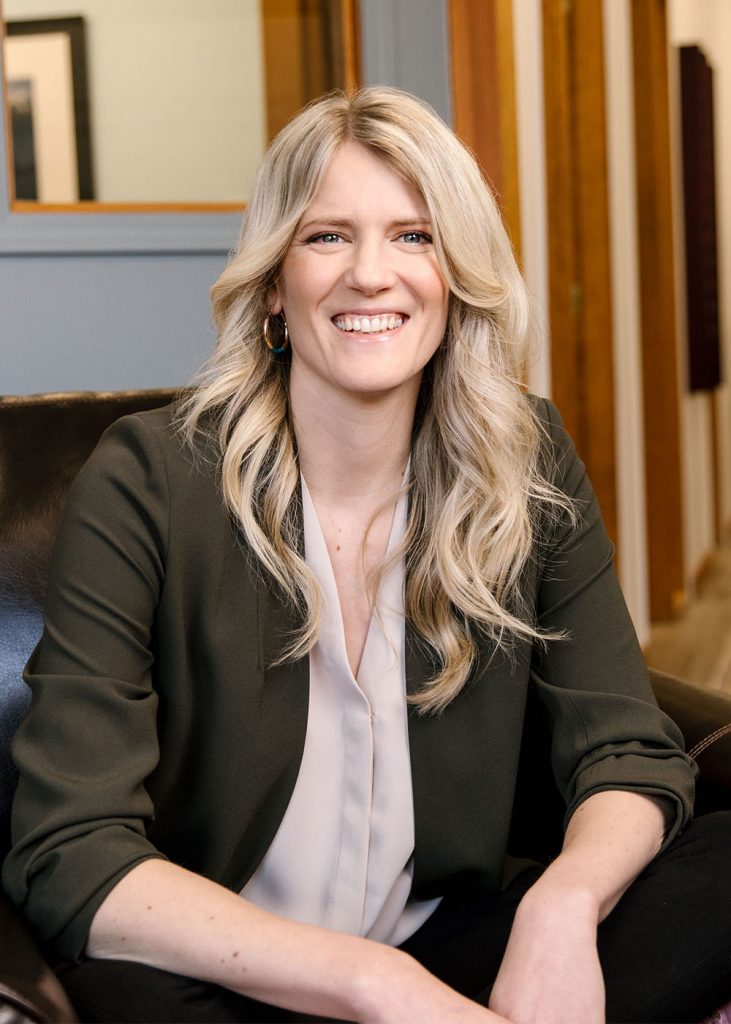Post-secondary education is expensive – especially if your kids want to become healthcare professionals themselves. According to the AMFC Graduation Questionnaire, over 40% of medical school graduates in Canada had debt exceeding $200,000![i] If you have more than one child to provide for, the total cost of education can be enormous. Thankfully, there are ways to ease the cost.
We’ll look at three ways to ensure your children receive the education they desire:
1) Registered Education Savings Plan
2) Family trusts
3) Using your professional corporation and holding company
Registered Education Savings Plans (RESPs)
RESPs should be the first strategy you consider. They are government-sponsored plans with huge benefits, including government grants, tax deferral, and income splitting.
The RESP owner, known as the subscriber, contributes to the plan. The beneficiaries – usually your children –receive the funds when they attend a qualified post-secondary educational program. Contributions are not tax-deductible, but investment growth and government grants are tax-deferred until withdrawn.
Types of RESPs
Self-directed RESPs
Self-directed RESPs are set up with a bank, your financial advisor, a robo-advisor, or a discount brokerage. You can own them individually or with a joint subscriber – for example, a spouse. You control deposits, withdrawals, and investment decisions.
There are two types of self-directed RESPs:
- Individual Plans: have a single beneficiary, and there are no restrictions on who can open one. You can add beneficiaries regardless of their age.
- Family Plans: can have multiple beneficiaries if they are related to the subscriber biologically, or by adoption (children, grandchildren, or siblings.) Beneficiaries must be under 21 years old when added to the plan. You can allocate withdrawals to each beneficiary separately, and they do not need to be equal. You can share government grants among the beneficiaries, subject to certain limits – more on that below.
Group RESPs
These are like a pension. Along with other plan members, you will contribute to the plan according to a pre-determined schedule. The timing of the education benefits depends on your child’s birthday, and the amount they receive will depend on the amount you contribute, among other factors. The plan manager invests the assets, usually in low-risk investments like GICs and bonds. There can be high sales charges, penalties for missing contributions or changing your contribution schedule, and making early withdrawals. They are also less flexible when it comes time to withdraw funds. Avoid these plans in favour of a self-directed RESP.
RESP Grants
The RESP’s most defining benefit is that the government will contribute grants to the plan on behalf of the beneficiaries And who doesn’t like money back from the government?
There are several types of grants; however, the primary grant is the Canada Education Savings Grant or CESG.
Canada Education Savings Grant (CESG)
The Federal Government provides a 20% grant on your contributions, up to $500 per child per year. This means a $2,500 contribution each year will get you the maximum grant for that year ($2,500 x 20% = $500.)
Grant room accumulates from the year your child is born, regardless of whether the RESP previously existed. If you miss a year, you can catch up on missed grants one year at a time. For example, if you open an RESP for your child when they are five years old, you can contribute $5,000 and receive $1,000 in CESGs ($500 for the current year and $500 for a previous year in which you received no grants).
Limits You Need to Know About
The maximum lifetime CESG is $7,200 per child, regardless of the number of RESP plans they have. A beneficiary cannot withdraw more than $7,200 in CESGs, even in a family plan.
Beneficiaries can usually receive grants until the year they turn 15. If you meet certain conditions, grants can be paid when they are 16 and 17 as well. You must meet one of the two following conditions:
- A minimum of $2,000 was contributed before the end of the year they turned 15
- A minimum annual contribution of $100 was made in at least four of the years before the end of the year they turned 15
This means that you must start to save before they are 15 years old to be eligible for the CESGs.
You can contribute up to $50,000 of your own money, per child, over their lifetime. You will be subject to a 1% monthly penalty if you over-contribute until you withdraw the excess.
Unlike an RRSP, you cannot carry contributions forward. For example, if you contribute the entire $50,000 on day one, they will receive only $500 in CESGs and be ineligible for any future CESGs.
RESPs can remain open for up to 35 years.
The Additional CESG
An additional 10% or 20% is payable on the first $500 contributed to the RESP each year for families with income below a certain threshold. You can find those thresholds here.
Canada Learning Bond (CLB)
An income-tested grant that provides additional savings for families’ children below certain income thresholds. You can find the thresholds here.The CLB provides $500 the first year they are eligible and $100 each year they continue to qualify until they turn 15.
Provincial Grants
British Columbia and Quebec have more incentives for RESP subscribers:
- BC Training and Education Savings Grant (BCTESG) is a one-time $1,200 grant payable to any beneficiary between six and nine. No contributions are required to receive this grant.
- Quebec Education Savings Incentive (QESI) is an additional 10% grant payable on contributions, up to $250 per year. For families with incomes below a certain threshold, the grant increases by up to $50 annually.
Besides grants, RESPs provide significant tax advantages.
Tax Deferral
Self-directed RESPs can hold various investments, including stocks, bonds, mutual funds, exchange-traded funds (ETFs), and more. The plan’s investment income and growth are sheltered from tax until you withdraw the funds, ideally once the beneficiary goes to school. At this point, the earnings and grants are taxed in the beneficiary’s hands, not your own. This is an effective way to split investment income with your children.
Income Splitting
The investment income, growth, and grants are taxed in the beneficiaries’ hands when you withdraw from the RESP. With proper tax planning and tuition tax credits, it is common for beneficiaries to pay zero tax on much – or all -– of this income.
Withdrawing from the RESP
There are two types of withdrawals available for funding education expenses. They are Education Assistant Payments (EAPs), made up of the accumulated grants and investment returns, and Post-Secondary Education withdrawals (PSE), consisting of the subscribers’ after-tax contributions to the plan.
EAPs are taxable to the beneficiary, while PSEs are tax-free.
Students must submit proof of enrollment to their RESP provider before making a withdrawal. When withdrawals are made, the subscribers can choose between EAPs and PSEs. When choosing EAP withdrawals, a pro-rated amount of grants and investment income is taxed in the beneficiary’s hands.
For example, assume the plan has $5,000 of grants and $10,000 of investment growth. If you make a $4,500 EAP withdrawal, you would be withdrawing $1,500 of grants and $3,000 of growth. The full $4,500 would be included in the beneficiary’s income for that calendar year.
Since most students have low or no income in the first few years of school, it is usually best to withdraw EAPs first.
By withdrawing all the grants and growth in the plan, you will be left only with your after-tax contributions. If the beneficiary completes school or changes paths, and funds are leftover, you can withdraw them tax-free and without penalty.
Withdrawals are not paid to the school directly – they are paid to either the subscriber or the beneficiary. Withdrawn amounts do not need to match tuition payments either – so long as you provide proof that the beneficiary is attending a qualified post-secondary program, withdrawals are allowed. For example, if a student received a full scholarship, you can make withdrawals to fund other expenses like room, board, transportation, etc.
Since RESPs can remain open for up to 35 years, there is often an opportunity to use funds from the RESP later in the beneficiaries’ lives, even if they don’t go to university when first eligible.
What Type of Education Qualifies for RESP Withdrawals?
You can make RESP withdrawals if the student attends a Designated Educational Institution. A common misconception is that you must use the funds for a traditional college or uUniversity. However, the list of eligible financial institutions is vast, ranging from beauty and automotive training to medical and law schools. If the program is three weeks in length, and the student spends a minimum of 12 hours per month on the program, then an RESP withdrawal is allowed.
I once had a client ask to withdraw funds to attend a two-week bartending course. The program was not on the list of approved schools, and the course did not meet the three-week minimum. But, after the two weeks of training, there was a one-week study break, followed by a final exam. We argued that including the extra study week meant the program met the three-week minimum, and we convinced CRA to allow the RESP withdrawal.
Withdrawal Limits
RESP withdrawals are very flexible, but there are some limits.
- EAP withdrawals made in the first 13 weeks of the program for full-time students are limited to $5,000. There are no limits on PSE withdrawals
- Full-time programs are those lasting three weeks or more, with a minimum of 10 hours of instruction or work per week
- EAP withdrawals made in the first 13 weeks of the program for part-time students are limited to $2,500. there are no limits on PSE withdrawals
- Part-time programs are those lasting three weeks or more, with a minimum of 12 hours of instruction or work per month
- EAP withdrawals over a certain amount are scrutinized and will require further explanation. The limit for 2022 is $25,268, and this amount is indexed annually. I have seen several withdrawals of this magnitude, and in each case, they were deemed reasonable, but they must be in some way related to education expenses. In one example, a parent purchased a car for their son living on campus. In another, they used part of the withdrawal to fund the purchase of a condo on-campus for the student to live in. Both were approved.
- There are no withdrawal limits for PSEs.
- You can make withdrawals for up to six months following the completion of an educational program.
What if My Child Does Not Attend a Qualifying Education Program?
What if your child becomes a famous rockstar or a successful entrepreneur and doesn’t attend post-secondary? In that case, you have a few options:
- Leave the RESP open
RESPs can remain open for up to 35 years. If they don’t go to school right away but change their mind later, you can still use the funds for education.
- Change the beneficiaries
For individual plans, you can replace the beneficiary with anyone you like. Any prior contributions will count as new contributions for the replacement beneficiary, which could result in an overcontribution. The exception to this rule is siblings, where both beneficiaries are under 21 years old.
- Transfer to an RRSP
If certain conditions are met, you can transfer up to $50,000 of accumulated investment income (known as Accumulated Income Payments or AIPs) to your RRSP. You must have the RRSP room available, the plan must have existed for at least ten years, and all beneficiaries must be over 21. If you own the plan jointly, each subscriber can use this option. The AIPs will be added to your income, but you will receive an offsetting tax deduction. Any grants in the plan must be repaid to the government dollar-for-dollar.
- Transfer to a Registered Disability Savings Plan (RDSP)
If the beneficiary qualifies for the Disability Tax Credit, they can open an RDSP if they have not already. AIPs can be transferred to an RDSP up to the $ 200,000-lifetime RDSP contribution limit but will not attract the Canadian Disability Savings Grant.
- Withdraw your contributions
You can withdraw your contributions tax-free since you paid tax on this money when you earned it. You can withdraw the remaining investment income, but you will pay tax at your marginal rate, plus a 20% penalty tax. This additional tax compensates for the investment earnings attributable to the grants in the plan. If you choose this option, you will have to return all government grants.
- Donate the remaining income to a designated educational institution
If you have exhausted all the above options and there is investment income remaining in the plan, you can gift it to a school of your choice. You will not pay tax on the gift, and you will not receive a charitable donation tax credit.
Estate Planning Considerations
For jointly owned plans, when a subscriber dies, ownership of the plan passes outside of the deceased’s estate directly to the surviving owner. No tax is payable, and provincial probate fees do not apply.
Upon the death of the last subscriber, the RESP forms part of the deceased’s estate, so you should name a successor RESP holder in your will. If you do, no taxes are owed at this point, but the market value of the RESP will be subject to provincial probate fees. Without a named successor, your executor may need to collapse the plan with taxes owing and grants repaid to the government.
RESP Strategies – How to Make the Most of Your RESP
With generous grants and tax benefits, RESPs should always be the first option you consider for education savings. Here’s how to make the most of them:
- Most people focus on maximizing the grants. While this is a commendable strategy, only $36,000 of contributions can attract grants ($7,200 lifetime grants divided by the 20% grant rate). That means $14,000 in available room can be used before bumping into the $50,000 lifetime contribution limit. Those that can afford to contribute this extra $14,000 should aim to do so as early as possible, maximizing the amount of time the funds are invested and increasing the overall investment growth in the plan. Consider depositing $16,500 in year one ($2,500 to get the maximum $500 grant, plus the additional $14,000 that will not attract grants.) Then, contribute $2,500 per year until the beneficiary is 13, and $1,000 in the year they turn 14. If you do this, you will hit both the $50,000 lifetime limit and the $7,200 grant limit.
- If you have $50,000 on hand to contribute to the RESP right away, consider forgoing the grants and depositing the entire $50k. You will give up the grants, but maximize the amount and time that the money is invested.
- Spread the $50,000 over the contribution period until they reach the contribution and grant limits. Spreading them out over time makes them more manageable.
- If you can’t contribute an extra $14,.000 in year one, that’s okay – aim to contribute this amount over time, as early as possible.
- If it looks like they won’t be attending post-secondary, consider slowing down on your RRSP contributions. That way, you will accumulate RRSP room for AIPs.
- If your practice is incorporated, consider taking your compensation as salary instead of dividends, which will increase your RRSP room.
- Where possible, own the RESP jointly with a spouse.
- Ensure you name a successor RESP holder in your will.
Using Family Trusts
Once you have optimized your RESP, it is time to look at other options.
Trusts are complicated, and this is not meant to be a detailed guide. Rather, you will learn about using family trusts to split income and save tax.
With all complex tax decisions, seek the advice of your tax advisor or accountant first.
What is a Trust?
A trust is a relationship where one party conveys property to another party for the benefit of a third party. Generally, a trust is created using a trust agreement or deed, and it should be examined or drafted by an experienced lawyer. There are costs to opening and maintaining a trust that you must consider to determine if a trust is right for you and your family.
The primary benefits of using a trust include:
- Control and protection of assets
- Avoidance of provincial probate fees on death
- Income splitting
- Transferring wealth to future generations
For a trust to be valid, there must be three certainties:
- Certainty of intention: the intention to create a trust must be clearly described
- Certainty of subject: a clear description of the property that is to be transferred to the trust
- Certainty of object: the beneficiaries of the trust must be clearly defined
And three parties:
- Settlor: the person or persons that transfer the initial property to the trust
- Trustee: the person or persons to whom the property is transferred, to be managed for the beneficiaries
- Beneficiary: the person or persons who ultimately benefit from the trust property
All trusts fall into two categories:
Testamentary Trusts
Arises through a person’s estate. The terms of the trust are defined in the deceased’s will, and it only comes into existence upon death.
Inter Vivos Trusts
Any trust that is not a testamentary trust. is Aan inter vivos trust which is created during a person’s lifetime.
We will discuss strategies for using inter vivos trusts, specifically a discretionary family trust.
How Are Trusts Taxed?
Trusts are separate taxpayers. Trusts must file annual tax returns and distribute tax slips to beneficiaries.
When trust assets generate investment income (interest, dividends, capital gains, etc.), it is taxable to the trust. Trusts do not benefit from graduated tax rates or personal tax credits, and income retained by the trust is taxed at the highest marginal tax rate. It is best, where possible, to allocate the trust income to the beneficiaries instead. When done correctly, the income is taxed in the beneficiaries’ hands.
When paid to beneficiaries, income retains its character, so dividends are taxed as dividends, and interest is taxed as interest.
Income can be allocated to beneficiaries to pay for reasonable expenses. Amounts paid are reasonable when for the child’s benefit – i.e., for support, maintenance, care, education, and enjoyment and advancement of the child, including the child’s necessities of life.
This can be a powerful income-splitting tool. However, you need to pay attention to a few rules for this to work effectively.
The Attribution Rules
The most pervasive tax rules are collectively known as the attribution rules. They ensure that taxes are attributed to the beneficial owner of the property. When attribution rules apply, the trust’s income is allocated back to the settlor, eliminating the income-splitting benefits. These rules primarily target paying income to spouses and minor children, but not adult children. See the table below for more on attribution scenarios.
Reversionary Trusts
The strictest attribution rule is the reversionary trust rule. Where a settlor has control over the distribution of the trust’s property, or the property could revert to the settlor, then all income of the trust is allocated back to the settlor, eliminating the tax benefits. The settlor should not be the sole trustee or a beneficiary, and if they are a trustee, they should be one of three. This way, as trustee, the settlor does not have a majority in decision-making regarding the trust’s property, and the reversionary trust rule may be avoided.
Transferring Property to a Trust
When you transfer assets to the trust, they are deemed to be disposed of, and any capital gains will be realized. This means taxes are payable the gain. It is best, where possible, to transfer cash to the trust instead.
The 21-Year Rule
Every 21 years, the trust is deemed to have disposed of its assets for tax purposes. This prevents you from deferring unrealized capital gains perpetually. The gains would usually be taxed in the trust’s hands, but with proper planning, the assets can be rolled out to the beneficiaries at cost, allowing the beneficiaries to take ownership of the assets without triggering the capital gains.
Using a Prescribed Rate Loan
If property is gifted to a trust without consideration, the attribution rules apply. However, if property is instead loaned to the trust, attribution is avoided. The loan must be made at the prescribed interest rate, a rate set by CRA and updated quarterly. The interest rate for this loan is locked in for the life of the loan, so when rates are low, this strategy can be particularly effective. At the time of writing, the prescribed loan rate is 1% but will increase to 2% on July 1st, 2022.[ii]
When using this strategy, there are several considerations:
- The trust must pay interest to the settlor before January 30th of the following calendar year. Failure to do so results in attribution of the trust’s income to the settlor in the current year and all future years
- The interest income is taxable to the settlor, and deductible to the trust
- For this strategy to work, the investment returns generated by the trust must be higher than the interest rate on the loan
Informal Trusts, AKA “In-Trust For” or “ITF” Accounts
Many financial institutions offer ITF accounts to their clients, opened on behalf of a minor child beneficiary. These simplified trust accounts are created using an account application form and not a trust deed, meaning the services of a lawyer are not needed. Without formal supporting documents, these accounts may lack critical information surrounding the three certainties required to meet the definition of a trust. The account owner (the trustee) is often the contributor (the settlor) of the trust. In these cases, the reversionary trust rules may apply.
Without a formal trust deed, there are no instructions for distributing the assets once the child reaches the age of majority. Once they turn 18 (19 in some provinces), the money is legally theirs to do with as they please. Many young adults are not financially mature enough to handle a windfall at that age – I know I certainly wasn’t.
ITF accounts are subject to the same attribution rules described above. And like all trusts, annual tax and information filings are required; however, this is rarely communicated to clients when opening ITF accounts.
There are estate planning concerns here too. If the trustee dies and a successor hasn’t been named in their will, the estate becomes the trustee until the beneficiary attains the age of majority. The trust’s settlor may not have chosen the executor of the trustee’s estate, leading to potential conflicts.
If the beneficiary passes away, the intestacy laws kick in, meaning the funds will be distributed to the child’s parents to do as they please. If the contributor was not a parent, they will have lost control of how those assets are used.
If opening an ITF account, ensure you have adequate documentation, are prepared to file returns each year, and are okay with your child receiving the full value at the age of maturity. You should also make provisions in your will for the account, naming a successor trustee.
Strategies for Using Trusts
Let’s look at a simplified example.
Drs. Jane and Bob Smith live in BC and have two children: Alice, age 16 and Trevor, age 20
They pay top marginal taxes of 53.5% in BC
Alice is attending a private school at $10,000 per year
Trevor is attending University at $20,000 per year
Jane has recently sold an investment property and has $500,000 after-tax that she wishes to use in part to pay for education expenses for their children. Their expected portfolio return is 5% annually, comprised of 3% interest ($15,000) and 2% capital gains ($10,000)
They also have a family RESP with both Alice and Trevor as beneficiaries
Example 1 – Jane invests the funds personally and does not use a trust
The interest is fully taxed, as are half of the capital gains. The total tax payable on the investment income earned by Jane would be $10,700.
Example 2 – gifting cash to a trust (not using a prescribed rate loan)
On their advisor’s advice, Jane and Bob meet with a qualified estate lawyer to create a family trust. Jane settles the trust and contributes the $500,000 in cash, naming Bob as the trustee and their two children as beneficiaries. Since Jane is the settlor of the trust, she ensures she is neither the sole trustee nor a beneficiary, to avoid the reversionary trust rules discussed above.
Bob, as trustee, elects to pay the interest income ($15,000) to Trevor to help pay his university costs. This income is taxed in his hands. Additionally, they withdraw $5,000 in EAPs from the RESP. The interest income and EAPs are taxed as regular income, and Trevor owes approximately $930 in taxes. By using his tuition tax credits, he may be able to bring this down to $0.
Bob then pays out the capital gains ($10,000) to Alice. Alice is a minor, but because the attribution rules do not apply to capital gains, they can be taxed in her hands. Only half of the capital gains are taxable, and she pays no tax on the income as it is her only income for the year.
In this example, a total of $25,000 of investment income was paid out of the trust. Assuming Trevor has unused tax credits, no tax is payable, for a tax savings of $10,700 vs the first scenario!
Example 3 – using a prescribed rate loan
Had Jane instead loaned the $500,000 to the trust at the prescribed rate (currently 1% but will rise to 2% shortly), the income could be paid to either beneficiary without attribution.
The trust would need to pay Jane $5,000 in interest, which is taxable to Jane. This results in taxes owing of $2,675.
They could then pay the interest to Alice, and she would again pay $0 in taxes due to her basic personal tax amount. The capital gains could be paid to Trevor, along with an EAP withdrawal from the RESP for $10,000. In this case, Trevor would owe approximately $100 in taxes before applying tuition tax credits.
Assuming Trevor has unused tax credits, the total tax payable is $2,675, a tax savings of $8,025 vs example 1.
Each scenario will be different – in some cases, the prescribed rate loan will allow for less total tax payable.
Holding Companies
Physicians and other regulated healthcare professionals can incorporate their practice. It is commonly recommended to use holding companies to separate the retained earnings of the business to be used for investment purposes.
What is a Holding Company?
A holding company is an entity formed to hold various types of investment assets and shares of your professional corporation. You then hold the shares of the holding company, sometimes alongside a spouse, children, or a trust.
Your professional company earns income and pays you salaries and dividends. After expenses, any retained earnings can be paid to the holding company without tax, where money can be invested in various assets like stocks, bonds, mutual funds, ETFs, real estate, etc. Eventually, the income earned on those investment assets is paid out to the holding company’s shareholders as dividends. In previous years, those dividends could be paid out to adult children and spouse shareholders and taxed in their hands. In 2018 however, CRA updated some rules known as Tax on Split Income (TOSI) which mostly eliminated the ability to split income using this structure.
There is, however, still an opportunity that exists under the new rules. That opportunity is second-generation income.
What is Second-Generation Income?
Second-generation income is income earned on other income. In the example above, the income earned by the corporation and then paid to the holding company is considered first-generation income. That income can no longer be taxed in the hands of the spouse or adult children shareholders under the updated TOSI rules – it would instead be taxed at the top personal marginal tax rate.
If that first-generation income is invested in the holding company, the growth and income earned from that investment is considered second-generation income – it is not derived from professional business income but from the portfolio of investment assets. CRA was asked to confirm their position on second-generation income and advised that this income does not fall under the new TOSI rules, meaning it can be paid out to spouses and adult children and taxed in their hands, so long as the holding company is not carrying on a business.
Let’s say you have a professional corporation (ProfCo) wholly owned by your holding company (HoldCo). After paying taxes, expenses, and salaries, ProfCo has $200,000 in retained earnings leftover. This $200,000 is then paid to HoldCo, which is not taxable to HoldCo. Holdco then invests the money in a diversified investment portfolio, which pays out an income distribution of $10,000. It is this $10,000 that can be paid out to shareholders of HoldCo and taxed in their hands.
When using this strategy, consider setting up a separate account to keep track of the second-generation income.
This strategy does have some risks. Whether or not the investment HoldCo is operating a “business” for income tax purposes is notoriously ambiguous, as the term “business” is not a defined term in the income tax act. Make sure you review this with your tax advisor before implementing.
Using the Capital Dividend Account (CDA)
Within a private corporation, the capital dividend account, or CDA, is used to track amounts of tax-free dividends that can be paid out to shareholders. It is a “notional” account, meaning it is an account for record-keeping purposes and not a bank or investment account.
Capital dividends are derived from a few sources; however, the most useful source for this guide comes from capital gains.
When you earn a capital gain personally, only half of the capital gain is taxable – the other half is tax-free. Similar tax treatment applies inside a corporation, but the mechanics are different. When a corporation earns a capital gain, half of it is taxable to the corporation. The other half creates a credit to the CDA, which shareholders can pay out tax-free.
Say you have a portfolio of index funds in your holding company. Your purchase price for the funds was $1,000,000, and the value has now grown to $1,100,000. In this case, your unrealized capital gain is $100,000.
If you were to sell the portfolio and trigger the capital gain, the corporation would include $50,000 of investment income on its tax return. The other $50,000 would create a credit to the corporation’s CDA, which could then be withdrawn tax-free by the shareholder and used to fund education or other costs.
When paying a capital dividend, you must file a capital dividend election form with CRA so they can confirm the balance. Your accountant will help prepare this for you.
Other Sources of Funding
After using the above strategies, your child may still need additional resources. In Canada, a variety of financial assistance is available both federally and provincially. Most financial institutions provide loans and student lines of credit with attractive interest rates and other features. Much has been said about the bad side of debt, but if no other options are available, it can be the difference between your child attaining a valuable and fulfilling education – or not.
If your retirement is secure, you can think about using your tax-free savings accounts. Withdrawals from TFSAs are tax-free and can be used for any purpose.
Putting it All Together
- Focus on RESPs first. Contribute as much as possible, and try to max out both the lifetime contribution limit of $50,000 and the grant limit of $7,200.
- If you have non-registered investments, consider using a discretionary family trust for income-splitting.
- If your practice is incorporated and you have a holding company with a family trust or adult children as shareholders, track the second-generation income from the holding company’s investment portfolio. It can be paid out to your children and taxed in their hands.
- If you are still short on your goal, help your children review student loans and lines of credit options through the government and your financial institution.
- Withdraw the from RESP first where possible. Be mindful of your children’s tax rates and try to use the taxable portion of the RESP first. This increases your flexibility on future withdrawals.
- Once the EAP withdrawals are finished, review your family trust or corporate structure with your accountant and financial advisor to determine the best way to fund additional expenses.
- Lastly, if there are still non-taxable contributions in your RESP, withdraw them.
Thanks for reading! If you found this guide helpful, feel free to share it with your friends, family, and colleagues.
And if you have questions or want to chat; you can reach me here:
[i] https://www.afmc.ca/sites/default/files/nationalreports/2021_GQ_National_Report_EN.pdf
[ii][ii] https://www.canada.ca/en/revenue-agency/services/tax/prescribed-interest-rates.html
The information contained herein has been provided for information purposes only. The information has been drawn from sources believed to be reliable. The information does not provide financial, legal, tax or investment advice. Particular investment, tax, or trading strategies should be evaluated relative to each individual’s objectives and risk tolerance. This does not constitute a recommendation or solicitation to buy or sell securities of any kind. Wellington-Altus Private Wealth Inc. (WAPW) does not guarantee the accuracy or completeness of the information contained herein, nor does WAPW assume any liability for any loss that may result from the reliance by any person upon any such information or opinions. Before acting on any of the above, please contact your financial advisor. WAPW is a member of the Canadian Investor Protection Fund and the Investment Industry Regulatory Organization of Canada.
© 2022, Wellington-Altus Private Wealth Inc. ALL RIGHTS RESERVED. NO USE OR REPRODUCTION WITHOUT PERMISSION.










